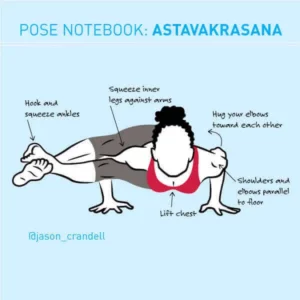Hey everyone!
I have been so busy working on the Yogaland Podcast in the past year that I haven’t had much time to blog. I miss it and I miss you! I have grand plans to get back to it and to create more content this year that will serve you.
For today, I’m going to share something straight-up and simple that’s transpiring for me lately. Here goes: As the working mom of a preschooler with a husband who travels constantly, I can say that unequivocally, it’s my practice that keeps me sane and balanced. (Can I get an “Amen!”)
And so. I am making this commitment to myself and to ALL OF YOU(!) that this year I am NOT completely tossing my practice aside during those times when my schedule becomes excessively wacko or “I don’t have enough time.” I’m gonna try to be a self-care ninja and craftily fit it in where I can.
Lately, I have been surviving on pranayama. When things are going well in my life, a standalone breathing practice is the first thing I toss out the window. It’s not conscious — it’s simply that I’m breathing mindfully during asana and calming my mind during my meditations. So, it seems like it’s all covered.
But when things get exceptionally busy (and I won’t bore you with the details but I’ll just say that a kitchen leak has kept us out of our house for SEVEN WEEKS), pranayama breathing is a godsend. It feels like the perfect bridge between asana and meditation. It channels the prana through my body (like asana) and it settles my energy and thoughts (like meditation). It feels so familiar — because after all, we breathe all day long! But it also feels so special to just take a few minutes to witness this simple act that keeps us alive and ticking.
Here’s the other thing: It’s so portable. I have done pranayama practice during long meetings! Alone in my cubicle! During tense dinners with family! On boring dates! But, admittedly, if you’re just starting out, it’s best to set aside 5 minutes of ideally quiet, alone time to practice.
Lately, pranayama breathing has given me an energy buzz when I need it, a sense of warmth in my heart when I feel cold and paralyzed, or space between thoughts when I’m anxious. There are SO MANY pranayama breathing practices – some are more energizing (like kapalabhati) and others more soothing (nadi shodana). For me Viloma, aka Stop-Action Breath is my go-to to cultivate evenness and balance.
See also 5 Ways to (Re)Inspire Your Yoga Practice
When you do Viloma, you either inhale in three parts and exhale completely. Or do the opposite: You inhale completely and exhale in three parts. (You can also inhale and exhale in three parts.) It might sound confusing, but in practice it’s incredibly simple and soothing. I prefer to start with the latter approach because it’s easier to access and it tends to be more grounding. Here’s how:
PRANAYAMA BREATHING FOR BUSY PEOPLE
1. Set a timer (that’s not too loud) for 5-6 minutes.
2. Find a comfortable seat – either cross-legged on the floor or on a chair with both feet touching the ground. Place one hand on your belly and the other on your heart.
3. Take a minute to deepen your inhalations and exhalations and to just “warm up” your breath.
4. Then inhale completely, feeling your belly, diaphragm, and ribs expand.
5. Now exhale one third of your breath. Pause. Exhale two-thirds. Pause. Exhale completely.
6. Repeat this cycle until your timer rings.
THE APPROACH
As you inhale, try not to force the breath. Make each part of the exercise light and easy. Feel the beauty and simplicity of the life force in your body. As you exhale, imagine a sense of grounding and rooting through your tailbone into the earth. If you feel strain at any point, return to simply watching your breath.
For some people, it helps to retain the breath for just a few seconds before the exhalation. I tend to do this in the last few minutes, when I’ve warmed up a bit. It’s definitely not something to force. Ideally, when your alarm sounds at five minutes you’re breathing a little more deeply and feeling more clear, grounded, and energized.
Hope this makes your day a little better. And I’d love to hear what your go-to pranayama breathing practice is in the comments below!



